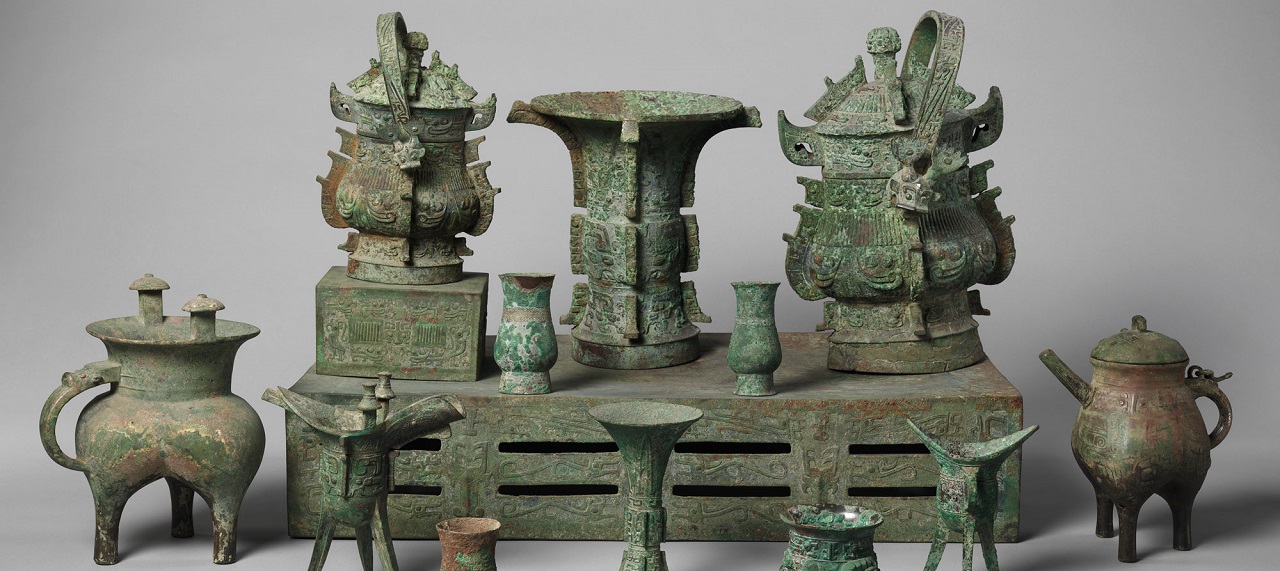The History of Metallurgy in China: A Testament to Ancient Innovation and Influence
The history of metallurgy in China spans millennia and serves as a pivotal witness to the development of Chinese civilization. From the emergence of copper artifacts in the late Neolithic Age to the advanced iron smelting technologies of the Han Dynasty, Chinese metallurgists continuously pushed the boundaries of technological innovation, influencing both domestic progress and global interactions.
Early Beginnings: Copper and Bronze
In the late Neolithic Age, China witnessed the advent of copper artifacts, marking the initial foray into metallurgical craftsmanship. Over time, this evolved into the sophisticated production of bronze during the Bronze Age. The transition from simple copper tools to intricate bronze vessels such as the renowned Four Sheep Square Zun and the Guo Jizi White Plate showcased not only technical prowess but also cultural refinement.
Bronze Age Marvels
During the Bronze Age, Chinese craftsmen demonstrated remarkable skill in casting a diverse array of bronze wares. These artifacts included ritual vessels symbolizing power and status, such as those used in sacrifices, alongside weaponry that highlighted the military strength of ancient Chinese civilizations.
Advancements in Iron Smelting
The advancement from bronze to iron marked a significant technological shift. During the Spring and Autumn Period and the Warring States Period, iron smelting technologies rapidly developed, revolutionizing agriculture with the widespread use of iron farm tools. This period saw an exponential increase in agricultural productivity, laying crucial groundwork for economic and societal advancements.
Han Dynasty Innovations: Blast Furnace and Steel
In the Han Dynasty, the introduction of blast furnace technology revolutionized iron smelting, leading to increased steel production. This technological leap provided essential materials for construction and infrastructure development, underpinning the expansion and stability of the Han Empire.
Evolution of Steel-Making Techniques
During subsequent periods, advancements in iron smelting continued with techniques like steel-making by infusion and the puddling process. These innovations enhanced the quality and versatility of steel, supporting further technological and industrial progress in ancient China.
Global Influence: Metallurgy on the Silk Road
Ancient Chinese metallurgical expertise not only flourished domestically but also spread internationally via the Silk Road. This cultural and technological exchange had a profound impact on global civilization, influencing metallurgical practices and technological advancements across Eurasia.
Modern Parallels: Elite Piping’s Journey
Founded in 2008, Elite Piping Technology has rapidly ascended in the industry, mirroring the innovative spirit of ancient Chinese metallurgists. Initially a foreign trade company, Elite has expanded its operations and established a modern production facility in Bazhou. This growth parallels ancient Chinese metallurgical products’ reach, demonstrating strong market competitiveness.
Future Prospects: Innovation and Excellence
Looking forward, Elite Piping Technology aims to uphold the legacy of ancient Chinese metallurgy by integrating advanced management concepts and innovative technologies. With a commitment to excellence, Elite seeks to continue its trajectory of growth and innovation, creating a future marked by technological advancement and market leadership.
Conclusion
The history of metallurgy in China is a testament to human ingenuity and innovation. Spanning from the ancient production of copper and bronze to the sophisticated iron smelting technologies of later dynasties, Chinese metallurgy has left an indelible mark on global civilization. As we look to the future, the lessons of ancient Chinese metallurgy continue to inspire advancements in technology and industry, ensuring a legacy of innovation and excellence for generations to come.



